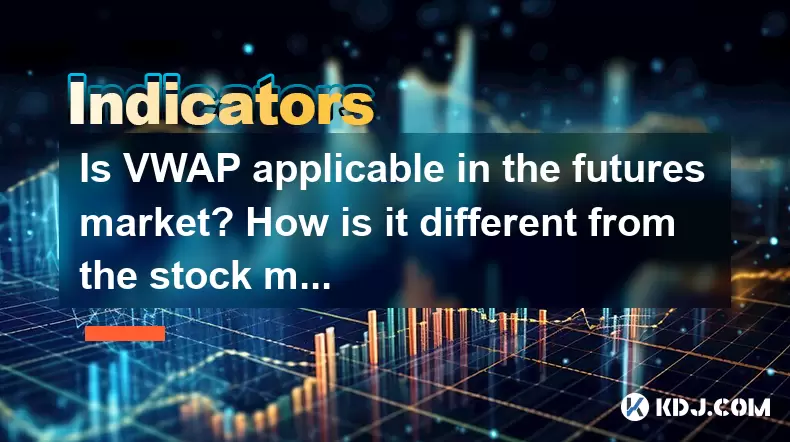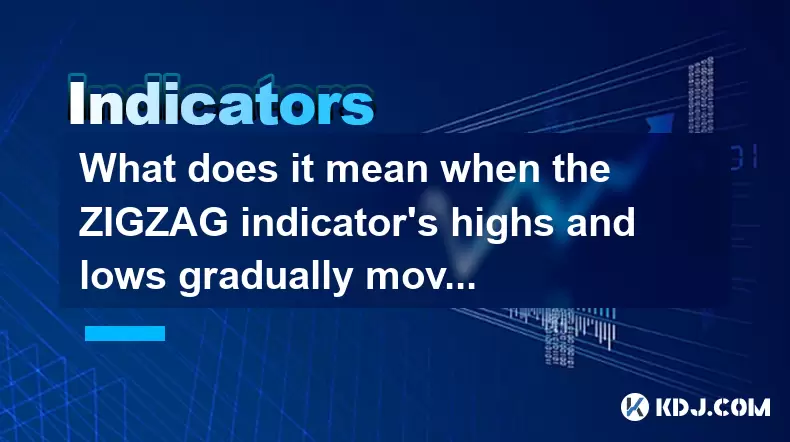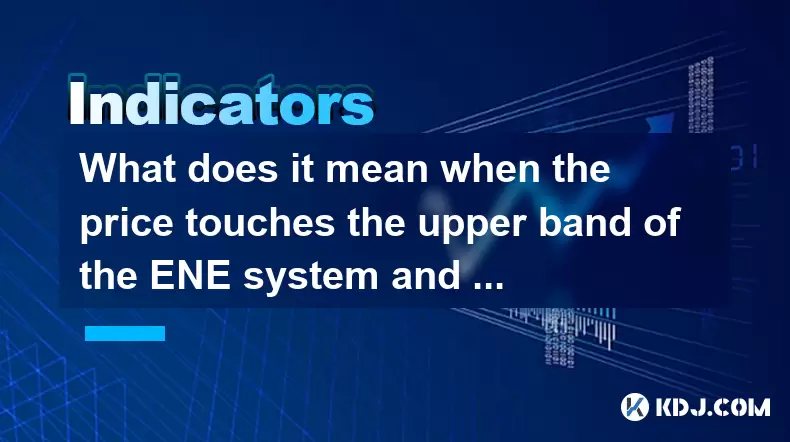-
 Bitcoin
Bitcoin $116600
0.12% -
 Ethereum
Ethereum $4259
5.24% -
 XRP
XRP $3.269
-0.80% -
 Tether USDt
Tether USDt $1.000
0.00% -
 BNB
BNB $805.6
1.49% -
 Solana
Solana $182.0
2.27% -
 USDC
USDC $0.9999
0.01% -
 Dogecoin
Dogecoin $0.2433
6.92% -
 TRON
TRON $0.3361
-0.83% -
 Cardano
Cardano $0.8176
2.77% -
 Hyperliquid
Hyperliquid $43.93
7.66% -
 Chainlink
Chainlink $21.35
9.11% -
 Stellar
Stellar $0.4516
-0.51% -
 Sui
Sui $3.953
2.85% -
 Bitcoin Cash
Bitcoin Cash $572.6
-2.63% -
 Hedera
Hedera $0.2665
1.63% -
 Avalanche
Avalanche $24.50
3.23% -
 Ethena USDe
Ethena USDe $1.001
0.01% -
 Litecoin
Litecoin $121.7
-3.25% -
 Toncoin
Toncoin $3.420
2.01% -
 UNUS SED LEO
UNUS SED LEO $9.006
0.22% -
 Shiba Inu
Shiba Inu $0.00001387
4.90% -
 Uniswap
Uniswap $10.99
-0.28% -
 Polkadot
Polkadot $4.134
4.21% -
 Dai
Dai $1.000
0.00% -
 Pepe
Pepe $0.00001243
4.80% -
 Bitget Token
Bitget Token $4.509
0.19% -
 Cronos
Cronos $0.1576
2.00% -
 Monero
Monero $275.8
1.20% -
 Ethena
Ethena $0.7594
15.99%
Is VWAP applicable in the futures market? How is it different from the stock market?
VWAP, a key trading benchmark, helps futures traders gauge market direction and execute trades, though its effectiveness varies with market liquidity and volatility.
May 22, 2025 at 12:07 am

Understanding VWAP in the Futures Market
Volume Weighted Average Price (VWAP) is a trading benchmark used by investors to determine the average price a security has traded at throughout the day, based on both volume and price. It is commonly used in the stock market, but its application extends to other financial instruments, including futures contracts. In the futures market, VWAP can be an essential tool for traders looking to gauge the market's direction and execute trades more effectively.
In the futures market, VWAP is calculated similarly to the stock market, but with some nuances due to the nature of futures contracts. Futures contracts are agreements to buy or sell an asset at a future date at a predetermined price. They are standardized and traded on exchanges, which means that the volume data used in VWAP calculations is readily available. The formula for VWAP remains the same:
[ \text{VWAP} = \frac{\sum (P_i \times V_i)}{\sum V_i} ]
Where ( P_i ) is the price of the trade and ( V_i ) is the volume of the trade at a specific interval.
How VWAP is Calculated in the Futures Market
To calculate VWAP in the futures market, traders need access to real-time data on trade prices and volumes. This data can be obtained from the exchange where the futures are traded. Here is how you can calculate VWAP for futures:
- Collect Data: Gather the price and volume data for each trade executed during the trading session.
- Multiply and Sum: Multiply each trade's price by its volume, and sum these products over the period.
- Sum Volumes: Sum the volumes of all trades over the same period.
- Divide: Divide the sum of the price-volume products by the sum of the volumes.
For example, if there were three trades in a futures contract with the following data:
- Trade 1: Price = $100, Volume = 100
- Trade 2: Price = $102, Volume = 200
- Trade 3: Price = $101, Volume = 150
The VWAP calculation would be:
[ \text{VWAP} = \frac{(100 \times 100) + (102 \times 200) + (101 \times 150)}{100 + 200 + 150} = \frac{10000 + 20400 + 15150}{450} = \frac{45550}{450} \approx 101.22 ]
Differences Between VWAP in Futures and Stock Markets
While the calculation of VWAP remains consistent across different markets, there are key differences between its application in the futures market and the stock market.
- Leverage and Volatility: Futures contracts often involve higher leverage, leading to increased volatility. This means that VWAP in the futures market can fluctuate more rapidly than in the stock market, affecting how traders use it for decision-making.
- Contract Expiration: Futures contracts have expiration dates, which can influence trading strategies and the relevance of VWAP. As the expiration date approaches, the price and volume of futures contracts can change significantly, impacting the VWAP.
- Market Hours: Futures markets often have different trading hours compared to stock markets. For example, some futures markets operate 24 hours a day, which can affect how VWAP is calculated and used over extended periods.
Using VWAP in Futures Trading Strategies
Traders in the futures market can use VWAP to inform various trading strategies. Here are some common ways VWAP is utilized:
- Entry and Exit Points: Traders might use VWAP as a benchmark to determine optimal entry and exit points for trades. If the current price of a futures contract is above the VWAP, it might be considered overvalued, suggesting a potential sell opportunity. Conversely, if the price is below the VWAP, it might be undervalued, indicating a buying opportunity.
- Trend Confirmation: VWAP can help traders confirm market trends. If the price consistently stays above the VWAP, it may indicate a bullish trend. If the price consistently stays below the VWAP, it may indicate a bearish trend.
- Stop Loss and Take Profit Levels: Traders might set stop loss and take profit levels based on VWAP. For instance, a trader might set a stop loss just below the VWAP to limit potential losses if the price moves against their position.
Limitations of VWAP in Futures Trading
While VWAP can be a valuable tool, it has limitations that traders should be aware of, especially in the futures market.
- Historical Data Dependency: VWAP relies on historical data from the current trading session. This means that it may not accurately reflect sudden market changes or news events that occur during the day.
- Intraday Focus: VWAP is typically calculated and used intraday. For longer-term trading strategies, other indicators might be more suitable.
- Volume Sensitivity: In markets with low trading volumes, VWAP can be less reliable because it is heavily influenced by a few large trades. This is particularly relevant in some futures markets where liquidity can vary.
Practical Example of Using VWAP in Futures Trading
To illustrate how VWAP can be used in futures trading, consider the following scenario:
A trader is monitoring a futures contract on a cryptocurrency index. The trader notices that the price of the futures contract has been trading above the VWAP for most of the day, suggesting a bullish trend. The trader decides to enter a long position, expecting the price to continue rising.
- Monitor VWAP: The trader keeps an eye on the VWAP throughout the day to confirm the bullish trend.
- Set Entry Point: The trader enters the long position when the price dips slightly but remains above the VWAP, anticipating a rebound.
- Set Stop Loss: The trader sets a stop loss just below the VWAP to limit potential losses if the price breaks below the VWAP.
- Set Take Profit: The trader sets a take profit level based on historical resistance levels and the current market conditions.
By using VWAP as a guide, the trader can make more informed decisions about entering and exiting trades in the futures market.
Frequently Asked Questions
Q: Can VWAP be used for all types of futures contracts?
A: Yes, VWAP can be used for all types of futures contracts, provided that real-time price and volume data is available. However, the effectiveness of VWAP may vary depending on the liquidity and volatility of the specific futures market.
Q: How often should VWAP be recalculated in the futures market?
A: VWAP should be recalculated continuously throughout the trading session to reflect the latest price and volume data. Many trading platforms provide real-time VWAP calculations, allowing traders to monitor it closely.
Q: Is VWAP more useful in certain futures markets than others?
A: VWAP can be more useful in highly liquid futures markets where there is significant trading volume. In less liquid markets, VWAP may be less reliable due to the potential impact of large trades on the calculation.
Q: Can VWAP be combined with other technical indicators in futures trading?
A: Yes, VWAP can be effectively combined with other technical indicators such as moving averages, RSI, and MACD to enhance trading strategies. Traders often use multiple indicators to confirm signals and make more informed trading decisions.
Disclaimer:info@kdj.com
The information provided is not trading advice. kdj.com does not assume any responsibility for any investments made based on the information provided in this article. Cryptocurrencies are highly volatile and it is highly recommended that you invest with caution after thorough research!
If you believe that the content used on this website infringes your copyright, please contact us immediately (info@kdj.com) and we will delete it promptly.
- Solana Meme Coin Presales: Hype or the Next Big Thing?
- 2025-08-10 02:50:12
- Pi Network, Altcoin Season, and Breakout Tokens: What's Hot in 2025?
- 2025-08-10 02:50:12
- Decoding Crypto Presales: Is Cold Wallet the New Neo Pepe?
- 2025-08-10 02:30:12
- PEPE's Moonshot Ambitions: Will the Memecoin Rally Continue?
- 2025-08-10 03:50:11
- Dogecoin, ROI, and the Meme Coin Mania: Is Little Pepe the Next Big Thing?
- 2025-08-10 03:50:11
- Cryptos, 2025, Market Caps: Riding the Next Wave
- 2025-08-10 02:30:12
Related knowledge

What does it mean when the price is trading above the SAR indicator but the red dots are densely packed?
Aug 09,2025 at 11:49pm
Understanding the SAR Indicator and Its Visual SignalsThe SAR (Parabolic Stop and Reverse) indicator is a technical analysis tool used primarily to de...

What does it mean when the MACD histogram continues to shorten but the price reaches a new high?
Aug 09,2025 at 09:29pm
Understanding the MACD Histogram and Its ComponentsThe MACD (Moving Average Convergence Divergence) indicator is a widely used technical analysis tool...

What does it mean when the Triple Moving Average (TRIX) turns downward but the price doesn't fall?
Aug 09,2025 at 12:42pm
Understanding the Triple Moving Average (TRIX) IndicatorThe Triple Moving Average, commonly known as TRIX, is a momentum oscillator designed to filter...

What does it mean when the 10-day and 30-day moving averages repeatedly intertwine?
Aug 10,2025 at 02:42am
Understanding Moving Averages in Cryptocurrency TradingMoving averages are among the most widely used technical indicators in the cryptocurrency tradi...

What does it mean when the ZIGZAG indicator's highs and lows gradually move downwards?
Aug 10,2025 at 02:14am
Understanding the ZIGZAG Indicator in Cryptocurrency TradingThe ZIGZAG indicator is a popular technical analysis tool used by cryptocurrency traders t...

What does it mean when the price touches the upper band of the ENE system and then falls back?
Aug 10,2025 at 12:42am
Understanding the ENE Indicator StructureThe ENE (Envelope) indicator is a technical analysis tool used in cryptocurrency trading to identify potentia...

What does it mean when the price is trading above the SAR indicator but the red dots are densely packed?
Aug 09,2025 at 11:49pm
Understanding the SAR Indicator and Its Visual SignalsThe SAR (Parabolic Stop and Reverse) indicator is a technical analysis tool used primarily to de...

What does it mean when the MACD histogram continues to shorten but the price reaches a new high?
Aug 09,2025 at 09:29pm
Understanding the MACD Histogram and Its ComponentsThe MACD (Moving Average Convergence Divergence) indicator is a widely used technical analysis tool...

What does it mean when the Triple Moving Average (TRIX) turns downward but the price doesn't fall?
Aug 09,2025 at 12:42pm
Understanding the Triple Moving Average (TRIX) IndicatorThe Triple Moving Average, commonly known as TRIX, is a momentum oscillator designed to filter...

What does it mean when the 10-day and 30-day moving averages repeatedly intertwine?
Aug 10,2025 at 02:42am
Understanding Moving Averages in Cryptocurrency TradingMoving averages are among the most widely used technical indicators in the cryptocurrency tradi...

What does it mean when the ZIGZAG indicator's highs and lows gradually move downwards?
Aug 10,2025 at 02:14am
Understanding the ZIGZAG Indicator in Cryptocurrency TradingThe ZIGZAG indicator is a popular technical analysis tool used by cryptocurrency traders t...

What does it mean when the price touches the upper band of the ENE system and then falls back?
Aug 10,2025 at 12:42am
Understanding the ENE Indicator StructureThe ENE (Envelope) indicator is a technical analysis tool used in cryptocurrency trading to identify potentia...
See all articles

























































































